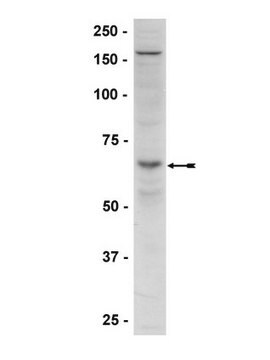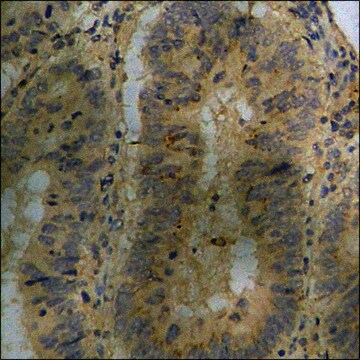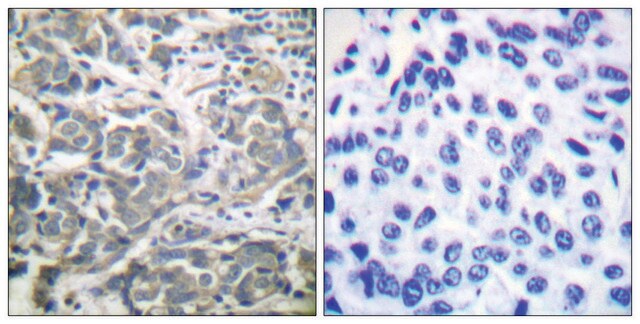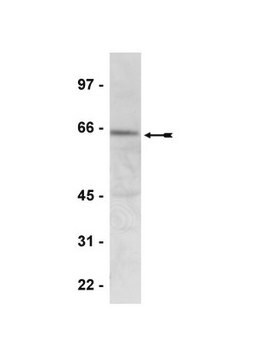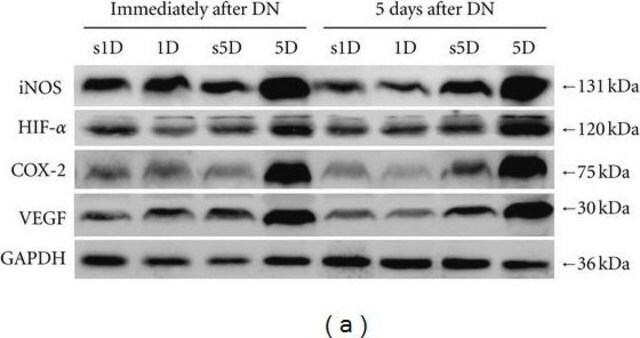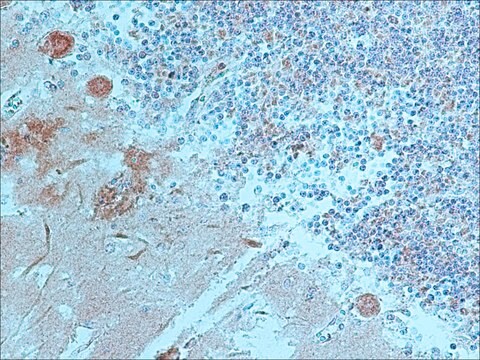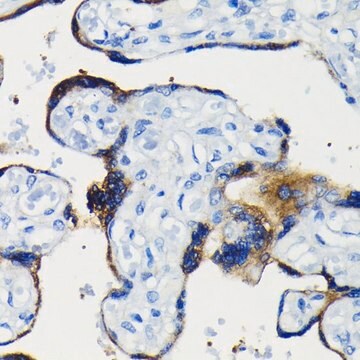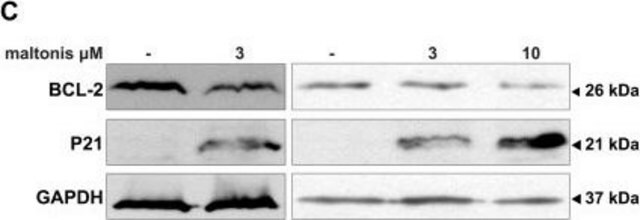07-350
Anti-AMPK α1 Antibody
Upstate®, from rabbit
Sinônimo(s):
5′-AMP-activated protein kinase, catalytic alpha-1 chain, AMP -activate kinase alpha 1 subunit, AMP-activated protein kinase, catalytic, alpha-1, AMPK alpha 1, AMPK alpha-1 chain, protein kinase, AMP-activated, alpha 1 catalytic subunit
About This Item
Produtos recomendados
fonte biológica
rabbit
Nível de qualidade
forma do anticorpo
purified immunoglobulin
tipo de produto de anticorpo
primary antibodies
clone
polyclonal
reatividade de espécies
human
reatividade da espécie (prevista por homologia)
rat (based on 100% sequence homology), mouse (based on 100% sequence homology)
embalagem
antibody small pack of 25 μg
fabricante/nome comercial
Upstate®
técnica(s)
immunohistochemistry: suitable
western blot: suitable
Isotipo
IgG
nº de adesão NCBI
nº de adesão UniProt
Condições de expedição
ambient
modificação pós-traducional do alvo
unmodified
Informações sobre genes
human ... PRKAA1(5562)
mouse ... Prkaa1(105787)
rat ... Prkaa1(65248)
Descrição geral
Especificidade
Imunogênio
Aplicação
Western Blot Analysis: 2 μg/mL of this antibody detected AMPK α1 in RIPA lysates from non-stimulated A431 cells.
Immunohistochemistry (Paraffin) Analysis: 1:250 dilution of this antibody detected AMPK α1 in human gallbladder tissue sections.
Signaling
Insulin/Energy Signaling
Qualidade
Western Blot Analysis:
0.5-2 μg/mL of this antibody detected AMPK α1 in RIPA lysates from non-stimulated A431 cells.
Descrição-alvo
Ligação
forma física
Armazenamento e estabilidade
Nota de análise
Positive Antigen Control: Catalog #12-301, non-stimulated A431 cell lysate. Add 2.5µL of 2-mercaptoethanol/100µL of lysate and boil for 5 minutes to reduce the preparation. Load 20µg of reduced lysate per lane for minigels.
Outras notas
Informações legais
Exoneração de responsabilidade
Não está encontrando o produto certo?
Experimente o nosso Ferramenta de seleção de produtos.
recomendado
Código de classe de armazenamento
10 - Combustible liquids
Classe de risco de água (WGK)
WGK 1
Certificados de análise (COA)
Busque Certificados de análise (COA) digitando o Número do Lote do produto. Os números de lote e remessa podem ser encontrados no rótulo de um produto após a palavra “Lot” ou “Batch”.
Já possui este produto?
Encontre a documentação dos produtos que você adquiriu recentemente na biblioteca de documentos.
Artigos
Autophagy is a highly regulated process that is involved in cell growth, development, and death. In autophagy cells destroy their own cytoplasmic components in a very systematic manner and recycle them.
Nossa equipe de cientistas tem experiência em todas as áreas de pesquisa, incluindo Life Sciences, ciência de materiais, síntese química, cromatografia, química analítica e muitas outras.
Entre em contato com a assistência técnica